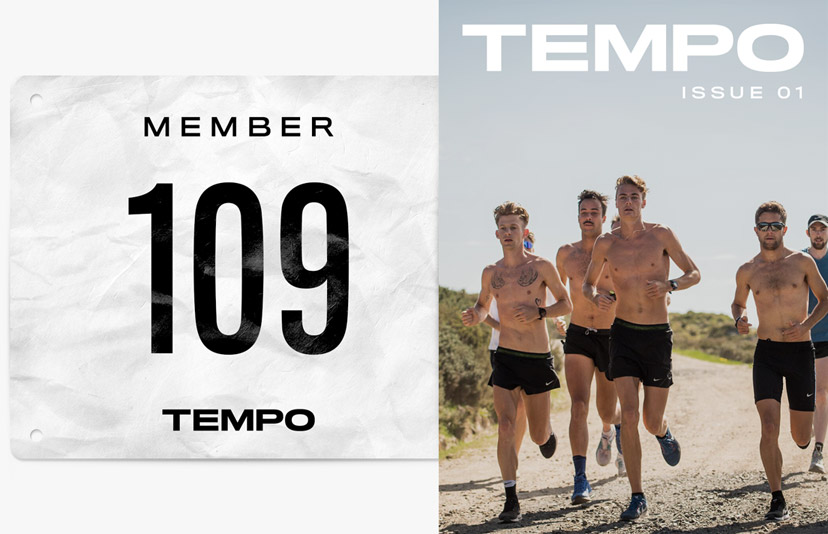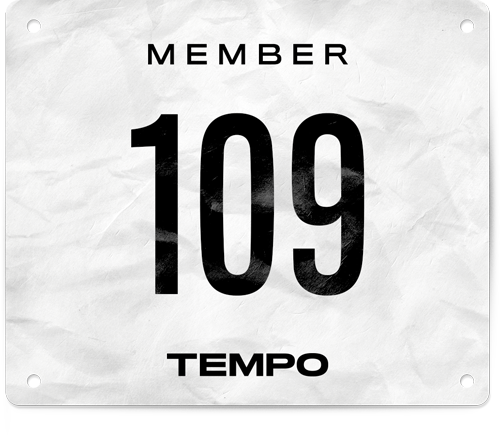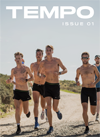Performance
Breaking4: ‘We choose to go to the Moon’
The Pacer’s Perspective: Stewart McSweyn on Assisting with His Second Moonshot
“But why, some say, the Moon? Why choose this as our goal? And they may well ask, why climb the highest mountain? ... We choose to go to the Moon. We choose to go to the Moon in this decade and do the other things, not because they are easy, but because they are hard …”
– US President John F Kennedy, September 1962, seven years before the Moon landing
Two weeks ago, the scene was set for history. On a warm evening in Paris, 26 June, Faith Kipyegon lined up at the Stade Sébastien Charléty surrounded by 13 of the world’s finest middle-distance runners. Unless you’ve been living under a rock, you’ll know this wasn’t just any race – it was Nike’s Breaking4, which the Swoosh billed as a moonshot attempt to make the Kenyan superstar the first woman to run a mile in under four minutes.
We’ve been thinking about that phrase “moonshot” a bit more since Kipyegon smashed through the tape in 4 minutes and 6.42 seconds, which Tempo Journal was privileged to witness firsthand. It’s a good time to remember it took eight years of uncrewed test flights and five crewed flights before Neil Armstrong and Buzz Aldrin successfully landed on the Moon in 1969.
And not to be too morbid, don’t forget that three astronauts lost their lives when Apollo 1 caught fire on the launch pad in 1967. Even after the lunar landing, three more astronauts nearly died during 1970’s Apollo 13 mission. Oh, and no-one’s been back to the Moon since 1972.
Newsflash: moonshots are extraordinarily complex, massively expensive and extremely difficult.
What Nike and Kipyegon have done is to begin the “space race” in earnest. They haven’t failed. They’ve succeeded in the first test launch.
Leaving the space race analogy aside, Eliud Kipchoge, Lelisa Desisa and Zersenay Tadese failed to break the two-hour marathon barrier in 2017 before, with methodological and technological refinements, Kipchoge broke the “impossible” barrier in 2019. We’re still waiting for a sub-two-hour result in open competition.
So, a woman will conquer the four-minute mile. It’s just a matter of time. What Nike and Kipyegon have done is to begin the “space race” in earnest. They haven’t failed. They’ve succeeded in the first test launch.
We – not just Nike but the entire running world – are now in the phase of learning from this first attempt. From an Australian perspective, we were lucky enough to see Olympian Stewart McSweyn join the dream team of 13 elite pacers – 11 men and two women – who were critical to the Breaking4 attempt. McSweyn also participated in the successful Ineos 1:59 mission when Kipchoge made his breakthrough, so we were super grateful to hear his insights on all this.
The Human Shield
Of all the innovations deployed in Paris, the pacing formation may have offered the greatest potential for time savings. At four-minute-mile pace – 15 miles or 24 kilometres per hour – air resistance becomes a formidable opponent, and research shows that optimal drafting can reduce oxygen consumption (which is basically equivalent to energy consumption) by up to 39%.
Brett Kirby, Breaking4’s lead for performance integration, described the formation’s aerodynamic sophistication: “We have the shield portion, we have the spoiler portion, we have the backdraft portion, and we have the reserve portions.” This wasn’t simple wind-blocking – it was choreographed protection designed to function around the curves of a track.
Nike’s pre-race estimate was that the combined effect of drafting and innovations such as an “Aeronode”-covered speed suit would be about three percent – seemingly modest, but potentially worth the precious seconds needed to move Kipyegon’s world record of 4:07.64 to something starting with 3:59.
“The three or four days leading in were pretty much packed schedules of training, making sure we knew what we were doing and that everyone was in formation.”
– Stewart McSweyn
McSweyn, with his Ineos 1:59 grounding, was an obvious recruit. “The Kipchoge experience in 2019 was amazing. So, to do it for Faith, who I’ve got to know over the years on the circuit, was a pretty cool opportunity to be involved in,” he says.
Once the pacers assembled in Paris, what followed was intensive preparation unlike anything McSweyn had experienced. “The three or four days leading in were pretty much packed schedules of training, making sure we knew what we were doing and that everyone was in formation.” After practising multiple formations, contingency plans, precise choreography, McSweyn says, “It’s probably the most prepared I’ve ever been for a meet or a race.”
The formation’s execution was nearly flawless, Kirby told us after the event. Elliott Giles led from the front, Grant Fisher provided constant encouragement alongside Kipyegon, while McSweyn and Cooper Teare served as tactical adjusters. “Grant was the guy right on it and then Cooper Teare and myself were kind of the guys that had to judge what was going on during the race,” McSweyn says.
From the Australian’s privileged position within the formation, Kipyegon looked completely in control through 1200 metres. “For her to look this good running 60-second laps – like it’s pretty quick for the pacers, and I’m looking around and seeing her still looking so smooth – I was kind of in awe of what she was able to do.”
When Kipyegon began to struggle in the final 400m, McSweyn found himself offering both encouragement and tactical guidance: “I was just saying, ‘Yeah, go Faith.’ And then I pointed to right on the back of Grant’s shoe to try and use him as a bit of windbreak coming off the bend.”
In the end, the sub-four barrier remained intact. Kipyegon had run the fastest women’s mile in history, but the dream would live another day.
“The last hundred metres was very tough,” Kipyegon said afterwards. “I think I gave it all in the first, the second lap, the third lap, I gave it all and to try and still roll my legs in that hundred metres was the hardest thing – I’ve never run like that before.”
Technological Arsenal
Nike’s innovation extended far beyond human pacers. The company developed a comprehensive suite of bespoke equipment specifically for Kipyegon’s attempt.
The most visible innovation was the Fly Suit – a one-piece aerodynamic solution featuring what Nike called Aeronodes. As Amy Jones Vaterlaus, VP of Nike’s Sport Research Lab, explained: “As Faith is running she encounters headwinds. They hit her chest, they split around her body, which creates turbulent flow. It’s quite messy and that flow creates a negative or backward force. This is what we’re trying to minimise.”
The Fly Suit incorporated months of testing and refinement. “We started off with the acknowledgement that skin is slow. And so really figuring out how do we create a head to toe system to make her body faster,” Jones Vaterlaus noted.
“This is a learning process. We have to learn where to balance things … we dared to try something that nobody has tried. We are going to learn from this and, going forward, I think it will go like we expected.”
– Faith Kipyegon
Complementing the suit was the revolutionary FlyWeb bra, described by Janett Nichol, VP of NXT Apparel Innovation, as “a 3D-printed TPU sports bra that’s supportive, ultra-lightweight and breathable. Traditional sports bras can hold moisture and create thermal burden – critical considerations for an event measured in fractions of seconds.
The footwear component was equally sophisticated. Kipyegon ran in the Victory Elite FK, a custom spike weighing just 85 grams. Building on the Victory 2 that she has trusted in for most of her career, the new spike featured a specially engineered carbon fibre plate and a slightly thicker Air Zoom Pod in the midsole to increase energy return, as well as an upper that weighs the same as three paperclips.
As Kirby emphasised, a fully rounded approach was crucial: “The integrative nature of this kit means everything with this attempt. No one thing will help her break it.”
Training: The Black Box
One area that remained slightly mysterious was Kipyegon’s specific preparation for Breaking4. Nike’s philosophy was clear: “Let Faith be Faith.” As their materials noted, “She has her training preferences perfectly tuned. She understands her own athleticism like a driver knows its race car. Nike’s role in Breaking4 wasn’t to reset Kipyegon, but to add to the capabilities of an already historic runner.”
While it would be incredibly presumptuous to tell the world’s best female middle-distance runner how to do her job – not least one with such a renowned coach as Patrick Sang, who has also steered Kipchoge to running immortality – it remains an open question whether there are any levers left to pull here.
What we do know is that Kipyegon drew confidence from her speed work. In her post-race interview she revealed, “I felt like it was the track sessions. I was so confident when I do like a speed session where, if I can do 62 times 8 in a very small recovery, I got so confident that this is possible”
Those blisteringly fast sessions – eight 62-second reps of 400m with minimal recovery, conducted at altitude in Kenya – provided the psychological foundation for believing sub-four was possible. At sea level, those times translate to approximately 58–59 seconds, suggesting Kipyegon possessed the pure speed required.
“Faith’s setting the standard where she’s showing what is possible. If we look back a couple years ago, there’s no way people would have been saying a woman could break 4:10 in a mile. Now we’re seeing her run 4:06.”
–Stewart McSweyn
Investment in Women’s Sport
Perhaps the most significant cultural aspect of Breaking4 was Nike’s decision to dedicate Breaking2-level resources to women’s athletics. The months of preparation, cutting-edge innovation, global marketing campaign and logistical complexity represented a statement about the value placed on women’s sporting achievements.
This wasn’t tokenism or a marketing afterthought. The company’s commitment extended to every detail, from testing track surface samples from 10 different stadiums worldwide to choosing Paris partly for its minimal jet lag impact.
The symbolism matters. When Nike assembled a predominantly male team of world-beating pacers to support a female athlete’s historic attempt, it sent a powerful message about collaboration and respect in elite sport.
For McSweyn, it was also a nice opportunity to work constructively with a group he’d normally be locked in battle with: “It made it a lot easier and made practices pretty fun hanging out with guys that you get to race on the circuit but who you might not feel like you’re part of a team with. So, that was the cool part as well, feeling like we were a team working for a bigger goal.”
“I just wanted to run my race, execute as fast as possible, see what the finish line could offer, and I was happy with the team that they believed in me, that I was capable of running below four in the mile.
“I will not lose hope. I will keep on trying. I will keep on going for this, pressing four.”
Like Kipchoge’s journey from the 2:00:25 near-miss in Monza to the 1:59:40 triumph in Vienna, Breaking4 feels like the beginning of something rather than an ending. The infrastructure now exists – technical, tactical and cultural – for the four-minute barrier to fall.
“This is a learning process,” Kipyegon continued. “We have to learn where to balance things … we dared to try something that nobody has tried. We are going to learn from this and, going forward, I think it will go like we expected.”
A cultural shift expanding the boundaries of women’s sport is already evident. Kipyegon herself emphasised this message in her post-race interviews: “This attempt was all about sending a message to women, a message to the older ones and to the next generation of younger girls out there that we have to dream big.
“We don’t stop dreaming … So, my message to the young girls is to dare to dream.” Of course, it may fall to one of those younger female runners to break the four-minute barrier. The Apollo program parallel holds here too. Those who prepared for the Moon landing weren’t ultimately the ones to take that giant leap for mankind – and that’s okay. The engineers, test pilots and mission planners made the achievement possible for others.
Kipyegon seemed to recognise this when she said, “If it does not come my way, I know one day, one time it will be in one woman’s hands … We can still hope for it. If it will not be myself trying it again, it’ll be someone else trying it – and I hope we will one day get it.”
When that barrier finally falls – whether it’s Kipyegon or someone inspired by her audacity – the Paris attempt will have played its part. More importantly, Breaking4 has shown that the running community will rally around ambitious dreams and that moonshots, while difficult, remain achievable.
The space race continues.


